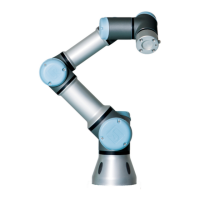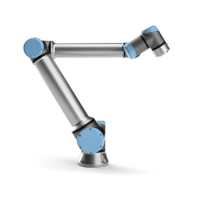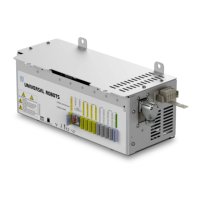2.3 Limiting Safety-related Functions
Limiting Safety
Function
Description
Joint position Min. and max. angular joint position
Joint speed Max. angular joint speed
TCP position Planes in Cartesian space limiting robot TCP position
TCP speed Max. speed of the robot TCP
TCP force Max. pushing force of the robot TCP
Momentum Max. momentum of the robot arm
Power Max. applied robot arm power
2.2 Stopping times of the Safety System
The stopping time of the safety system is the time from a fault or violation of a safety-related func-
tion occurs to the robot is brought to a complete stop and the mechanical brakes are engaged.
The maximum stopping times in the table must be considered if the safety of the application relies
upon the stopping time of the robot. E.g. if a fault in the robot results in a stop of a complete factory
line, where certain actions must take place immediately after the stop, the maximum stopping times
must be considered.
The measurements are conducted with the following configuration of the robot:
• Extension: 100% (the robot arm is fully extended horizontally).
• Speed: The TCP speed limit of the safety system is set to the described limit.
• Payload: maximum payload handled by the robot attached to the TCP (3 kg).
The worst case stopping time for Stop Category
1
0 in case of a violation of the safety limits or
interfaces can be seen in the following table.
TCP Speed Limit Maximum Stopping Time
1.0
m
/s 400 ms
1.5
m
/s 450 ms
2.3 Limiting Safety-related Functions
Advanced path control software decreases speed or issues a program execution stop if the robot
arm approaches a safety-related limit. Violations of limits will hence only occur in exceptional
cases. Nevertheless, if a limit is violated, the safety system issues a Stop Category 0.
1
Stop Categories are according to IEC 60204-1, see Glossary for more details.
UR3/CB3 I-14 Version 3.10
Copyright © 2009–2019 by Universal Robots A/S. All rights reserved.

